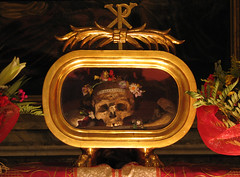Frankincense And Myrrh
Many associate frankincense and myrrh with the biblical story of the three wise men bringing gifts in honor of the birth of the baby Jesus. However, frankincense and myrrh were sacred scents to many cultures around the world long before the advent of Christianity. Originating in Arabia and Africa, the valuable properties of these scents have been recognized and utilized for both religious and non religious purposes for at least 5000 years. Modern science is only just beginning to investigate the health and medicinal benefits of frankincense and myrrh that have been documented in ancient medical texts from Egypt, Europe and India.
What is Frankincense and Myrrh?
Frankincense and myrrh are both aromatic resins that are collected to make perfume and incense. A resin is simply dried tree sap. Frankincense resin comes from trees of the genus Boswellia and Myrrh from the genus Commiphora. Both of these trees are found in eastern Africa, mostly Somalia and in Southern Arabia. Myrrh is a reddish colored resin with an oily consistency and a bitter taste. Frankincense has a yellow color and has a sweet taste.
The word ‘incense’ describes the aroma released with the smoke of any odoriferous substance when burnt. Frankincense is a French word meaning ‘pure incense’.
How are these incenses made?
Resin is collected by cutting or peeling back the tree’s bark. This causes the sap of the tree to ooze out from the cut. The sap emerges slowly and is allowed to dry on the tree where it hardens into yellow colored ‘tears’. It takes around three months for the resin to acquire the right consistency. When ready, the ‘tears’ are scraped off the trunk of the tree. The
